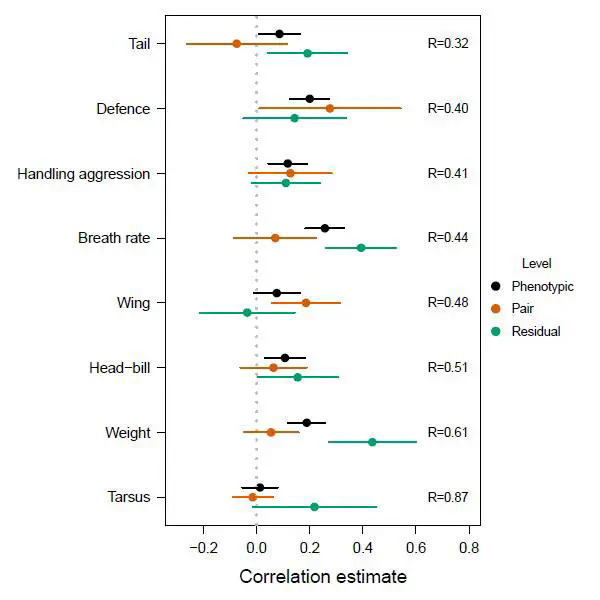Shared environmental effects bias phenotypic estimates of assortative mating in a wild bird
 Distribution (point estimates and 95% confidence intervals) of the phenotypic, between-pair and residual correlations for every trait studied, ordered by average repeatability (R)
Distribution (point estimates and 95% confidence intervals) of the phenotypic, between-pair and residual correlations for every trait studied, ordered by average repeatability (R)Abstract
Assortative mating is pervasive in wild populations and commonly described as a positive correlation between the phenotypes of males and females across mated pairs. This correlation is often assumed to reflect non-random mate choice based on phenotypic similarity. However, phenotypic resemblance between mates can also arise when their traits respond plastically to a shared environmental effect creating a (within-pair) residual correlation in traits. Using long-term data collected in pairs of wild blue tits and a covariance partitioning approach, we empirically demonstrate that such residual covariance indeed exists and can generate phenotypic correlations (or mask assortative mating) in behavioural and morphometric traits. These findings (i) imply that residual covariance is likely to be common and bias phenotypic estimates of assortative mating, which can have consequences for evolutionary predictions, (ii) call for the use of rigorous statistical approaches in the study of assortative mating, and (iii) show the applicability of one of these approaches in a common study system.